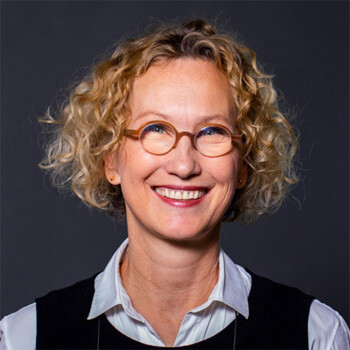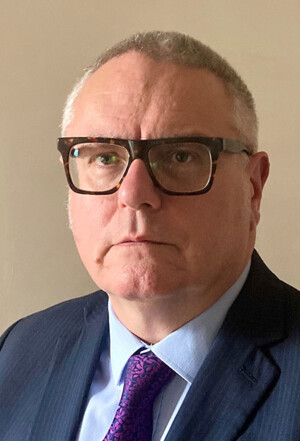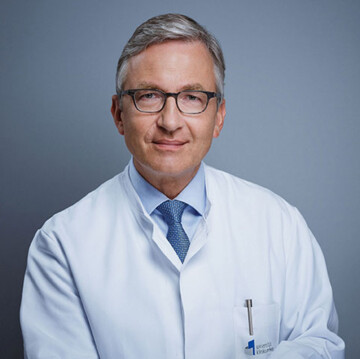PATIENT MANAGEMENT WITH LIMITED RESOURCES

With Geographic Atrophy (GA) treatments now having FDA approval in the US, and anticipated throughout the rest of the world, it is time to up-skill with the most advanced diagnostic technologies available, and to define patient pathways for care.
“GA treatment is a huge breakthrough, but the clinician needs to be able to manage this efficiently. Availability in the US is making a significant impact to millions of lives,” explains Professor Ursula Schmidt-Erfurth, Chair of the Department of Ophthalmology and Optometry at the Medical University of Vienna, citing Apellis’ Syfovre for the treatment of dry forms of advanced AMD.
As clinicians beyond the US watch closely for the array of breakthrough drugs, healthcare managers are being urged to prepare treatment pathways. How to best recognise disease status and manage patients is critical, emphasises Christopher Mody, Clinical Director for Heidelberg Engineering -

“Dry AMD is five times more prevalent that Wet AMD, and clinicians need to catch patients early. First signs of the condition may be problems with night vision and contrast sensitivity. Whilst not wanting to cause alarm, GA patients need to be told that 1mm squared loss of tissue each six months is not unusual. The recent AREDS study quotes 2.5 years as the mean time for GA to have foveal involvement, and that GA will account for 35 percent of advanced AMD.”
But under-pressure clinics, with insufficient clinicians in many countries, means smart patient management is essential to maximise resources for a lifelong condition. Being able to determine fast and slow progressors is vital and, fortunately, the most advanced technologies are now available to define patient pathways for care.
Professor Schmidt-Erfurth emphasises the importance of multi-modal imaging and reproducibility, saying that the Heidelberg Engineering SPECTRALIS is the only device capable of monitoring the Ellipsoid Zone layer with the level of detail required for effective GA monitoring -
“The patient does not experience a degeneration in vision for some time – there is no way to show improvement following treatment, apart from showing that the photoreceptor and Retinal Pigment Epithelium (RPE) loss has come to a halt. The RPE and photoreceptor loss can overlap and this is where multimodal imaging comes to the fore. We also need to be aware that GA patients’ vision will fluctuate during the day with dry eye, tiredness and where they are fixating.”
Christopher Mody, Clinical Director for Heidelberg Engineering, adds -
“The Heidelberg Engineering SPECTRALIS, and the comprehensive eye scanning that it provides, including the Blue Peak autofluorescence module, have played a major part in securing treatment approvals, thanks to the quality of its imaging to aid in identifying and monitoring at-risk patients. Working through multiple pathologies, it is set up for AMD care with patented TruTrack active eye tracking, noise reduction, Auto re-scan, with customised scanning speed and confocal optics, so appreciated to cut through opacities.

Professor Frank Holz, a specialist in this field from the University of Bonn, adds –
“All pivotal studies for the US-approved complement inhibitor studies for geographic atrophy, as well as most onging trials, use fundus autofluorescence based quantification of the GA lesion over time.” He and his team played a pivotal role in the development and acceptance of this anatomical endpoint as a primary outcome parameter to assess efficacy of the new drugs. Autoflourescence imaging is also used to distinguish AMD-related atrophy from other causes, as there is a multitude of other retinal diseases mimicking GA due to AMD.
Chris Mody agrees –
“Image-driven diagnosis and monitoring, hand-in-hand with new treatments, will bring benefits to an enormous group of patients. By providing two more years of driving, or two more years of independent living for patients this will have great impacts on social care budgets – we must all strive to ensure this is uppermost in healthcare budgeting,” he adds.
Professor Holz is watching the US’s first year of GA treatment carefully, with lessons to be learned on managing workflow –
“This is an extremely dynamic field and there is huge interest, with new treatments in wet and dry AMD. We need to streamline how we practice medicine. In the short-term we need to combine high quality imaging and artificial intelligence solutions to create an efficient dashboard of information that will support fast, confident, decision making. In the long-term, we need to develop new therapies, single treatment options, like gene therapy, to reduce the treatment burden.”